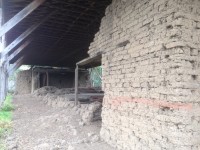Though not recognized as an official sister-city, Benicia and Sonoma are quite connected. Benicia was founded in 1847 by three key figures in Sonoma’s history, Mariano Vallejo, Thomas O. Larkin and Robert Semple.
Dr. Semple, a year earlier, was one of the bear flaggers responsible for arresting Vallejo and transporting him to Sutter’s Fort in the Sacramento Valley. Vallejo sold them the land, without a gun to his head, desirous of a town to be created and named after his wife, Francisca Benicia.
In the early years of California’s statehood, Benicia was selected as the third site to serve as the state capital. It was a rather short-lived honor, lasting but one year from February 11, 1853 to February 25, 1854. The capital was then moved to Sacramento. Benicia also was the county seat representing Solano County, until that was moved to Fairfield in 1858.
Sonoma resident William Tustin was the first to settle in Benicia in June of 1847. Tustin grabbed his wife and son and made the move on the eve of summer, constructing a 40 by 18 foot adobe home. Dr. Semple followed shortly, building a wood frame house. Soon, Benjamin MacDonald build another adobe home which Captain E.H. von Pfister purchased and converted into a store and hotel.
The town was taking shape and within six months, there were fifteen buildings. A wharf was constructed by Dr. Semple and enough people had made the move to Benicia for the townsfolk to adopt a local government. Like Sonoma, Benicia was a military town, though the militia was not of Mexican origin.
In 1849, General Persifer F. Smith moved his headquarters to Benicia. The army developed three distinct installations. The 2nd Infantry, under the command of Lieutenant Colonel Silas Casey, constructed what was known as the Benicia Barracks occupying 99.5 acres. The first structures were not constructed via local materials, but came by ship from the east coast.
Captain Charles Stone was the head of ordnance for the Pacific Coast. One of his jobs was to find a suitable location for an arsenal. There were two key elements Stone was looking for, moderate climate and a relatively protected area with ocean access. Benicia had both and in 1852, the arsenal was constructed. This arsenal was only one of five permanent arsenals in the United States. Today, one of Benicia’s treasures is the Arsenal Commanding Officer’s Quarters.
The quarters were built in 1860 by Julian McAllister. McAllister commanded the arsenal between 1860 and 1885. McAllister was very active in the social life of the town and his home served as a focal point for the community. The home was built on a rise, and given McAllister’s high ranking position, his home was the largest and most elaborate in the area. The elegance of the home attested to his great rank and was intended as a place of community hospitality. Military dress balls, teas, parties, meetings of community leaders, dinners and other such gatherings, were commonplace.
Benicia also had a connection to the Pony Express. The Pony Express was established in 1860 and riders carried mail from St. Joseph, MO to San Francisco, CA. The trip took about 10 to 14 days. When riders missed their steamer connection from Sacramento to San Francisco, they took an alternate route to Benicia. Evidently, that happened 19 times during the short-reigned Pony Express.
Benicia is a beautiful little town to visit. Located on the Carquinez Strait, there are dozens of restaurants and boutique shops for the hungry and disheveled, and of course, a wonderful little historical museum. Go to Benicia to learn more about your local history!

